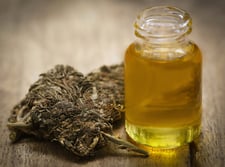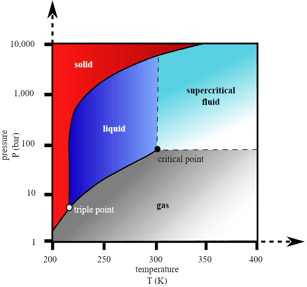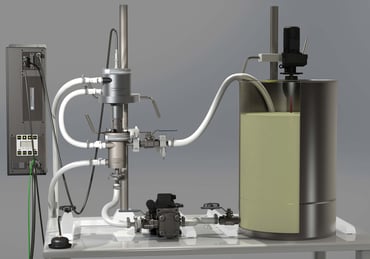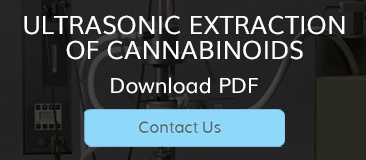 The cannabis (marijuana, hemp) plant has been used for medicinal purposes for millennia. In addition to terpenes and flavonoids, over 100 types of therapeutically active compounds known as cannabinoids have been identified in these plants [1]. The two most important and well-known cannabinoids are tetrahydrocannabinol (THC) and cannabidiol (CBD) [2]. Cannabinoids have the ability to directly and/or indirectly affect receptors in our cells because they mimic endocannabinoids produced by our own bodies endogenously, for example, in response to injury [3].
The cannabis (marijuana, hemp) plant has been used for medicinal purposes for millennia. In addition to terpenes and flavonoids, over 100 types of therapeutically active compounds known as cannabinoids have been identified in these plants [1]. The two most important and well-known cannabinoids are tetrahydrocannabinol (THC) and cannabidiol (CBD) [2]. Cannabinoids have the ability to directly and/or indirectly affect receptors in our cells because they mimic endocannabinoids produced by our own bodies endogenously, for example, in response to injury [3].
MEDICAL SIGNIFICANCE
CBD is non-psychoactive and has been clinically demonstrated to have analgesic, antispasmodic, anxiolytic, antipsychotic, antinausea, and antirheumatoid arthritic properties [4, 5].  It is especially known for its anticonvulsant properties, which can be used in the treatment of epilepsy [6-8]. THC is psychoactive and, as such, can be used recreationally. It is, however, also an extremely potent therapeutic compound, which is used, for example, by cancer patients to reduce nausea, vomiting and pain, and to stimulate appetite [9].
It is especially known for its anticonvulsant properties, which can be used in the treatment of epilepsy [6-8]. THC is psychoactive and, as such, can be used recreationally. It is, however, also an extremely potent therapeutic compound, which is used, for example, by cancer patients to reduce nausea, vomiting and pain, and to stimulate appetite [9].
Due to significant synergy between different cannabinoids and terpenes (fragrant oils responsible for the aroma of the cannabis plant), it is considerably more beneficial to utilize natural cannabis-based preparations, rather than any single purified or synthetic cannabinoid [10]. When administered together, CBD and THC can alleviate the symptoms of neurological disorders, including Alzheimer's, Parkinson's and multiple sclerosis [11, 12], as well as treat age-related inflammatory diseases [3].
CANNABIS CONCENTRATES
 In recent years, concentrated extracts of cannabis plants (shatter, crumble, budder, wax, oil) have become very popular because they allow many convenient routes of administration that are preferable to smoking the plant directly. Concentrates are viscous and frequently very sticky substances that can be produced by extraction with such solvents as petroleum hydrocarbons (e.g., propane, butane, hexane, petroleum ether, naphtha), subcritical or supercritical CO2, and alcohols (e.g., ethanol, isopropanol). Extraction is followed by solvent evaporation, which yields the “pure” and very potent concentrate. Since unwanted plant waxes, fats and chlorophyll are also extracted, an additional “winterization” step may be necessary. This step involves re-dissolving the extract in ethanol at approximately 1:5 ratio, freezing at - 40 oC for at least 24 hours, filtering out the resulting precipitation of unwanted components, and removing ethanol by evaporation.
In recent years, concentrated extracts of cannabis plants (shatter, crumble, budder, wax, oil) have become very popular because they allow many convenient routes of administration that are preferable to smoking the plant directly. Concentrates are viscous and frequently very sticky substances that can be produced by extraction with such solvents as petroleum hydrocarbons (e.g., propane, butane, hexane, petroleum ether, naphtha), subcritical or supercritical CO2, and alcohols (e.g., ethanol, isopropanol). Extraction is followed by solvent evaporation, which yields the “pure” and very potent concentrate. Since unwanted plant waxes, fats and chlorophyll are also extracted, an additional “winterization” step may be necessary. This step involves re-dissolving the extract in ethanol at approximately 1:5 ratio, freezing at - 40 oC for at least 24 hours, filtering out the resulting precipitation of unwanted components, and removing ethanol by evaporation.
MAIN EXTRACTION METHODS
On average, marijuana plant buds yield about 12.5 % of extracted concentrate [13]. Since during extraction the buds must be completely covered, the solvent volume to plant mass ratio has to be about 20 or more [13, 14], which is problematic because this large excess of solvent needs to be subsequently evaporated.
With the exception of subcritical and supercritical CO2, the abovementioned solvents are flammable. Since their vapors are heavier than air, they can collect near the floor of an incorrectly ventilated room and explode. Special precautions are, therefore, always necessary when working with these substances.
Petroleum hydrocarbons – fast and effective, but dangerous and not entirely healthy
 Petroleum hydrocarbon extraction practically avoids chlorophyll contamination, is inexpensive to perform and yields very potent products, which makes it quite popular [15]. The danger associated with these solvents is, however, especially high since they are more flammable and volatile than the rest. In addition, substantial amounts (roughly equal to the total content of terpenes) of hydrocarbons always remains in the final product, which is harmful to health [16].
Petroleum hydrocarbon extraction practically avoids chlorophyll contamination, is inexpensive to perform and yields very potent products, which makes it quite popular [15]. The danger associated with these solvents is, however, especially high since they are more flammable and volatile than the rest. In addition, substantial amounts (roughly equal to the total content of terpenes) of hydrocarbons always remains in the final product, which is harmful to health [16].
The associated extraction equipment cost is approximately $30,000 for a unit able to process 2.5 kg of dry cannabis material in about 1 hour (plus 1 additional hour for dewaxing). The typical dimensions of such a unit are 82” H X 73” W X 21” D [17]. The extraction is carried out in the batch mode on a fixed amount of preloaded raw material.
Supercritical and subcritical CO2 – effective, clean and safe, but slow, complex and expensive
 Supercritical and subcritical CO2 is chemically inert, non-flammable and can be easily removed from the finished product and recycled. It is a strong solvent for non-polar and slightly polar compounds and, as such, produces high extraction yields. Its use, however, requires expensive, complex and bulky equipment operating at very high pressures (~ 1,500 PSI). It is also essential to dry the cannabis material thoroughly before extracting it with CO2 in order to prevent the formation of carbonic acid, which can cause the extracted oil to turn rancid, as well as to maintain high oil yields and minimize the amount of extracted chlorophyll. Post processing (winterization) is commonly necessary after using supercritical or subcritical CO2, although there are reports of minimizing this requirement by “tuning” the properties of the solvent through pressure and temperature adjustments [18].
Supercritical and subcritical CO2 is chemically inert, non-flammable and can be easily removed from the finished product and recycled. It is a strong solvent for non-polar and slightly polar compounds and, as such, produces high extraction yields. Its use, however, requires expensive, complex and bulky equipment operating at very high pressures (~ 1,500 PSI). It is also essential to dry the cannabis material thoroughly before extracting it with CO2 in order to prevent the formation of carbonic acid, which can cause the extracted oil to turn rancid, as well as to maintain high oil yields and minimize the amount of extracted chlorophyll. Post processing (winterization) is commonly necessary after using supercritical or subcritical CO2, although there are reports of minimizing this requirement by “tuning” the properties of the solvent through pressure and temperature adjustments [18].
Equipment costs and processing times are much higher for this technology, averaging about $120,000 for a system suitable for extracting the oil from 3.2 kg of the raw material in about 16 hours. The typical dimensions of such a unit are 82” H X 93” W X 75” D [19]. The process is carried out in the batch mode on a fixed amount of preloaded raw material.
Alcohols – fast, effective and clean, but costly and somewhat dangerous
 Alcohols are a very attractive option due to their very low or no toxicity, good solvent properties and lower flammability than hydrocarbon solvents (although care still must be taken when using them). These solvents do, however, also extract unwanted compounds, such as chlorophyll, requiring post-processing (winterization). In addition, removing these solvents after extraction is quite energy-intensive.
Alcohols are a very attractive option due to their very low or no toxicity, good solvent properties and lower flammability than hydrocarbon solvents (although care still must be taken when using them). These solvents do, however, also extract unwanted compounds, such as chlorophyll, requiring post-processing (winterization). In addition, removing these solvents after extraction is quite energy-intensive.
An ethanol extraction system suitable for processing approximately 4 kg of raw cannabis material costs about $90,000 and takes about 1 hour to complete the process [20]. The dimensions of such a system are similar to those of the abovementioned petroleum hydrocarbon unit and the process is also carried out in the batch mode on a fixed amount of preloaded raw material.
Olive oil – a great option, but not suitable for making concentrates
 An elegant study by Romano and Hazekamp [16] showed that olive oil is arguably the best solvent for cannabis extractions because it is non-toxic and has the ability to extract all terpenes and cannabinoids very efficiently, while leaving chlorophyll behind. Unfortunately, since the boiling point of olive oil is above those of cannabinoids and terpenes, it cannot be boiled off after the extraction process is completed. This means that cannabis concentrates cannot be prepared this way, and cannabinoid concentrations in the olive oil cannot exceed a small fraction of a percent. Even if the oil is reused for extracting from fresh buds many times, the cannabinoid content will remain too low to consider the resulting product a “concentrate”.
An elegant study by Romano and Hazekamp [16] showed that olive oil is arguably the best solvent for cannabis extractions because it is non-toxic and has the ability to extract all terpenes and cannabinoids very efficiently, while leaving chlorophyll behind. Unfortunately, since the boiling point of olive oil is above those of cannabinoids and terpenes, it cannot be boiled off after the extraction process is completed. This means that cannabis concentrates cannot be prepared this way, and cannabinoid concentrations in the olive oil cannot exceed a small fraction of a percent. Even if the oil is reused for extracting from fresh buds many times, the cannabinoid content will remain too low to consider the resulting product a “concentrate”.
HOW CAN HIGH-INTENSITY ULTRASOUND HELP?
 For the past several years, Industrial Sonomechanics has been providing ultrasonic equipment for:
For the past several years, Industrial Sonomechanics has been providing ultrasonic equipment for:
- The improvement of cannabis oil extraction rates and yields;
- The production of water-compatible cannabis extract formulations, exhibiting enhanced bioavailability and rapid onset of action.
Our ongoing research in these areas has yielded several breakthroughs, which we will be sharing with you in the upcoming blog posts.
Currently we are focusing our efforts on:
1. Developing a water-based cannabis oil extraction method. The objective is to avoid using solvents and instead utilize water (with some food-compatible additives) as the extraction medium. Since cannabis oils are hydrophobic and do not mix well with water, this approach is quite challenging. However, because high-intensity ultrasound is particularly good at mixing liquids that do not naturally mix, we expect to have this method developed in several months.
2. Designing translucent, water-compatible cannabis extract formulations with enhanced bioavailability. Cannabis extracts' poor solubility in water results in low bioavailability, requiring patients to consume a lot more product than would otherwise be necessary. Utilizing our experience with the pharmaceutical industry, we are in the final stages of developing cannabis extract nanoemulsions (nano-cannabinoids) with exceptionally high bioavailability and therapeutic effect. These formulations are translucent and water-compatible so they can be easily mixed into beverages without compromising their optical clarity.
REFERENCES:
- Aizpurua-Olaizola, O., et al., Evolution of the Cannabinoid and Terpene Content during the Growth of Cannabis Sativa Plants from Different Chemotypes. J. Nat. Prod., 2016. 79(2): p. 324–331.
- Joy, J.E., S.J. Watson, and J.A. Benson, eds. Marijuana and Medicine: Assessing the Science Base. ed. I.o.M. National Academy of Sciences. 1999, National Academy Press: Washington, DC. 288.
- Guy, G. and B. Platt, Cannabinoid-Containing Plant Extracts as Neuroprotective Agents. 2015, GW Pharma Limited: U.S. Patent #9,205,063.
- Mechoulam, R., L.A. Parker, and R. Gallily, Cannabidiol: an Overview of Some Pharmacological Aspects. J. Clin. Pharmacol., 2002. 42(11 Suppl.): p. 11S-19S.
- McPartland, J.M. and E.B. Russo, Cannabis and Cannabis Extracts:Greater Than the Sum of Their Parts? J. Cann. Therap., 2002. 1: p. 103-132.
- Consroe, P. and S.R. Snider, Therapeutic Potential of Cannabinoids in Neurological Disorders, in Cannabinoids as Therapeutic Agents, R. Mechoulam, Editor. 1986, CRC Press: Boca Raton, FL. p. 21-41.
- Carlini, E.A. and J.A. Cunha, Hypnotic and Antiepileptic Effects of Cannabidiol. J. Clin. Pharmacol., 1981. 21: p. 417S-427S.
- Cunha, J., et al., Chronic Administration of Cannabidiol to Healthy Volunteers and Epileptic Patients. Pharmacology 1980. 21(3): p. 175-185.
- Guzmán, M., Cannabinoids: Potential Anticancer Agents. Nat. Rev. Cancer., 2003. 3(10): p. 745-755.
- Hampson, A.J., et al., Cannabidiol and (−)Δ9-Tetrahydrocannabinol are Neuroprotective Antioxidants. Proc. Natl. Acad. Sci. U. S. A., 1998. 95(14): p. 8268-8273.
- Wade, D.T., et al., Do Cannabis-Based Medicinal Extracts Have General or Specific Effects on Symptoms in Multiple Sclerosis? A Double-Blind, Randomized, Placebo-Controlled Study on 160 Patients. Mult. Scler., 2004. 10(4): p. 434-441.
- Wade, D.T., et al., A Preliminary Controlled Study to Determine Whether Whole-Plant Cannabis Extracts Can Improve Intractable Neurogenic Symptoms. Clin. Rehabil. , 2003. 17(1): p. 21-29.
- Simpson, R. Hemp Oil Dosage Information. 2011; Available from: https://www.youtube.com/watch?v=Ijwpv6x2R6U.
- Understanding the Different Types of Cannabis Oil and How They’re Made. The Chill Bud Company Website 2016; Company website]. Available from: http://thechillbud.com/understanding-the-different-types-of-cannabis-oil-and-how-theyre-made/.
- Simpson, R. Rick Simpson's official website. 2013; Available from: http://phoenixtears.ca.
- Romano, L.L. and A. Hazekamp, Cannabis Oil: Chemical Evaluation of an Upcoming Cannabis-Based Medicine. Cannabinoids, 2013. 1(1): p. 1-11.
- Precision Extraction Solutions Website and Product Literature. 2016; Available from: https://precisionextraction.com/.
- Eden Labs website. 2016; Available from: http://edenlabs.com/processes/co2-extraction.
- Apeks Supercritical Website and Product Literature. 2016; Available from: http://www.apekssupercritical.com/.
- Colorado Extraction Systems Website and Product Literature. 2016; Available from: http://www.coloradoextraction.com/.
.jpg?width=1994&height=332&name=Logo%20Sonomechanics%20White%20No%20Shadow%20R_Final%20(1).jpg)
